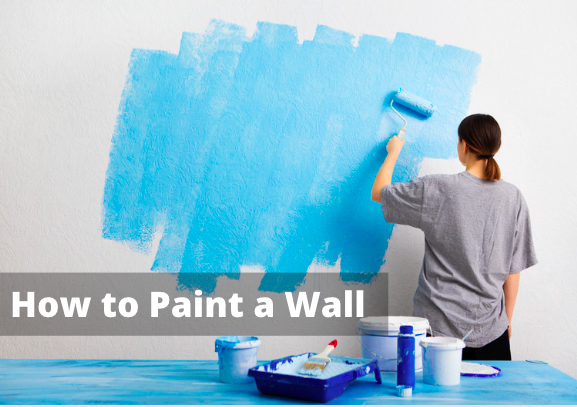How to Paint a Wall
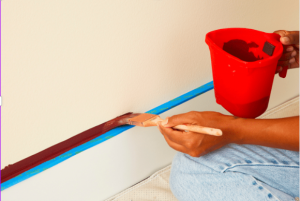
Painting a room is one of the most effective and least expensive ways to change the look of your home. It is important to know how to paint a wall in order to achieve professional results.
Using masking tape such as Shurtape’s Frog Tape is an excellent option for getting sharp and clean lines.
This article will show you how to prepare your wall before painting. You’ll also learn about the proper types of paint and brushes to use.
Painting interior walls
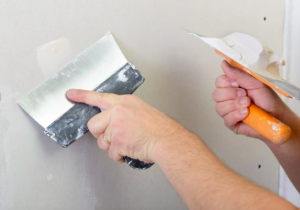
If you want to learn how to paint interior walls, then you must first understand the procedure for wall preparation.
Besides painting the walls, you should also fill any nail holes and blemishes in them. You may also spot-prime dark spots if necessary.
After you have prepared the walls, it’s important to wash them properly with a mild soapy solution, and then thoroughly dry them.
Before starting painting, make sure the wall is dry and sound, and if not, seek help from a professional.
If you’re painting interior walls, you need to know how to get the best results. Paint rollers are essential for smooth and even painting, but you may need several rollers to get uniform coverage.
First, you need a brush that can reach the corners. You should also use a brush that’s approximately two inches wide. Moreover, you need to use a brush that’s two to three inches long.
The next step in painting is to mix paint with a mixing stick frequently. After you’ve applied the first coat, wait for two to four hours. If your first coat of paint doesn’t look good, you may need to repeat it.
Preparation
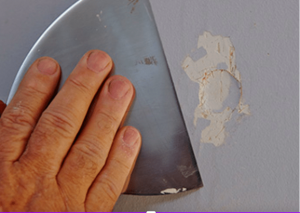
When you’re about to paint a room or wall, the best way to ensure a smooth finish is to prepare the wall for the paint.
You should remove wrinkled wallpaper and any damage on the surface of the wall, as this will cause bumps in the final paint finish.
Not only will this prevent paint from flaking, but it will also improve aesthetics.
Proper preparation will also make the paint adhere better to the surface. If you’re painting a wall that was recently plastered or painted, make sure to remove as much dust as possible.
Scrubbing will remove a substantial amount of dust and grime. This will make the wall more even and smooth, making the paint job much easier.
Once the wall is cleaned, dab it dry with a clean towel. In some cases, you may even want to make your own cleaning solution, including some distilled white vinegar and warm water.

Brushes
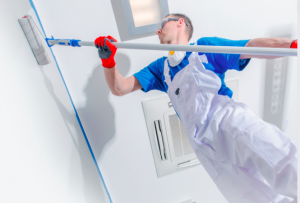
Painting brushes come in many different shapes, sizes, and materials. Natural hair, synthetic fibers, and foam are among the most popular choices.
These are made to absorb oil-based paint quickly and leave a smooth, even finish. They can be reused as often as necessary and can also be cleaned in between uses.
Listed below are some tips to choose the best brushes for painting a wall. These will help you get the best results!
Choose paintbrushes that are angled. Angled brushes are easier to paint in corners and grooves. Choose the brush shape based on the type of wall you are painting.
Smaller 2-2.5 inch brushes are ideal for cutting into corners, while larger 5 or six-inch brushes are best for covering larger areas in a single coat. For a smooth finish, choose a brush with angled bristles.
Drying time
The drying time of your wall color depends on the type of paint and the type of coat you’re using. Drying time is the amount of time it takes for a coat of paint to dry and become fully resistant to scuffs, scrapes, and stains.
While a freshly painted wall can be touched the next day, you should wait a week before moving furniture or other items back into the room.
It’s not necessary to wait for the entire curing time. Two to four weeks is more than sufficient, but three to four is better.
In humid climates, the drying time for paint will take longer than the ideal amount of time. High humidity inhibits the paint’s ability to adhere to the wall properly.
Try to keep the humidity levels in your room below 50 percent. If you live in a humid climate, you can also use a dehumidifier to keep the room at a comfortable level.
Ventilation is also essential for the drying process, so make sure the room has good ventilation.
Using a ‘trim brush’
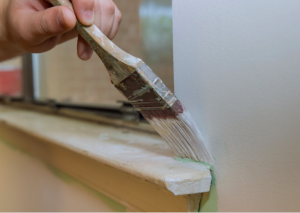
Using a ‘trim brush,’ or narrow paintbrush, to paint a wall is a great way to make the edges appear less uneven.
The brush’s narrow shape makes it easier to get right up the walls corners and trims. While this method does take longer than using a ‘trim brush’, it is worth it for a clean and neat wall.
Using a ‘trim brush,’ as it’s also known, is an effective way to create a straight line on the edges of a wall. The best type of trim brush is a sash brush.
Wetting the bristles of the brush before painting will help the paint adhere more evenly to the bristles. This technique takes a little practice but can make the edges look sharp.
Conclusion
We appreciate you taking the time to read!
Finally, we hope you found this article interesting? And what do you think about ”How to Paint a Wall”
Please feel free to share your thoughts with us in the box below.
Check the facts
With accuracy and impartiality, we endeavour to deliver the most up-to-date essential information for fashion enthusiasts.
Please contact us if you would like to contribute to this article or advertise with us.
And let us know if you notice something that isn’t quite right.









